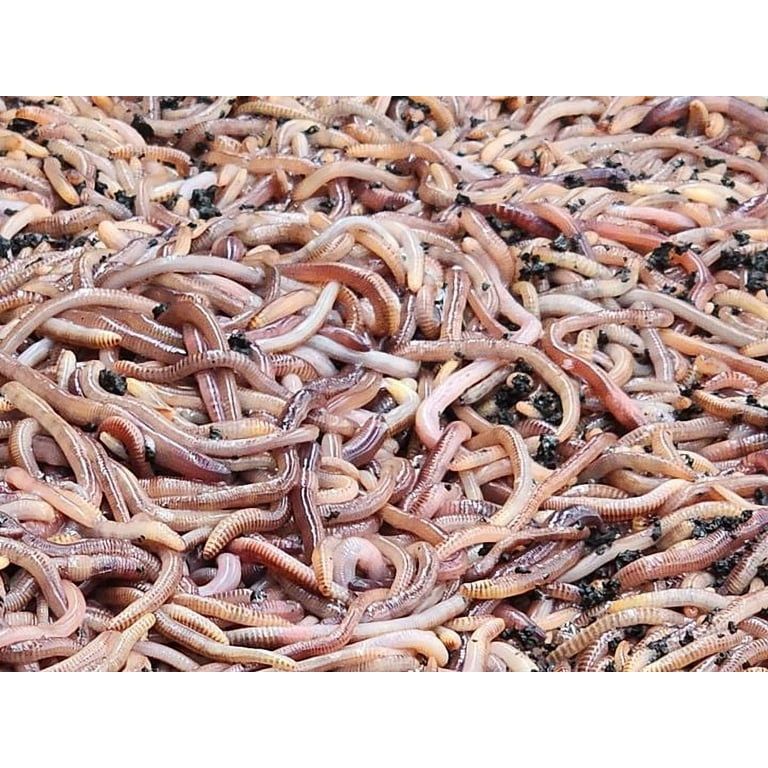Red worms: Where to buy them
Red worms: Where to buy them
Blog Article
Using Red Wigglers for Reliable Organic Waste Disposal
Making use of red wigglers for natural waste disposal presents a compelling approach to managing food scraps while promoting environmental sustainability. These worms not only improve waste decay yet additionally generate important worm spreadings, which can considerably improve dirt wellness. Their ability to refine huge quantities of natural material with very little initiative settings them as an accessible service for houses and communities alike. However, comprehending the subtleties of establishing a successful worm bin and maintaining an optimal habitat is vital for optimizing their benefits. The following actions in this process might amaze you.
Advantages of Using Red Wigglers
One of one of the most compelling advantages of using red wigglers for organic waste disposal is their impressive effectiveness in composting. These worms, medically called Eisenia fetida, are especially adapted for damaging down organic products, allowing them to process waste as much as two times their body weight every day. This rapid decomposition not only accelerates the composting process however additionally produces nutrient-rich worm castings that considerably improve soil quality.
Furthermore, red wigglers add to a decrease in land fill waste. By drawing away organic materials from garbage dumps, they help lessen methane exhausts-- a powerful greenhouse gas. This environmental advantage is essential in the fight versus environment adjustment.
In addition, red wigglers are low-maintenance and can grow in numerous atmospheres, making them easily accessible for both beginner and knowledgeable composters. Their capability to recreate promptly guarantees a steady population, promoting ongoing waste processing.
Establishing Your Worm Bin
Producing an efficient worm container is vital for taking full advantage of the advantages of composting with red wigglers. Make certain the bin has ample drain openings to prevent excess wetness, as red wigglers prosper in a moist however not soggy atmosphere.
(Worm Farms Near Me)Following, prepare the bed linens product, which offers as the worms' environment and food source. The bin ought to be put in a dark, temperature-controlled area, ideally in between 55 ° F and 77 ° F, to maintain worm activity.
When the container is established up, present the red wigglers, permitting them to accustom to their new setting. A well-maintained container will certainly not only sustain the health and wellness of the worms yet likewise promote efficient decomposition of organic waste.
(Hickory)
What to Feed Red Wigglers
An understanding of the ideal diet for red wigglers is important for keeping a healthy and balanced worm populace and optimizing composting performance. These things not only give necessary nutrients but also contribute to the moisture equilibrium within the worm container.
It is crucial to stay clear of certain foods that can hurt the worm population. Red wigglers need to not be fed meat, dairy items, oily foods, or refined items, as these can draw in bugs and develop unpleasant smells. red wigglers. Additionally, citrus fruits and zesty foods ought to be minimized, as their level of acidity can be damaging to worms
Keeping track of the worm container for food usage prices will aid make sure that red wigglers are getting a sufficient diet while preserving an efficient composting environment. Proper feeding methods are essential for fostering a growing ecological community within the worm bin.
Maintaining Your Worm Environment
A well-maintained worm environment is important for the wellness and performance of red wigglers. To guarantee optimal problems, it is crucial to check temperature level, wetness, and aeration within the worm bin. Red wigglers thrive in a temperature variety of 55 to 77 levels Fahrenheit. Exceeding this range can worry the worms, so it's crucial to position the bin in an appropriate location away from straight sunlight and severe temperature levels.
Moisture levels ought to be kept regular; the bedding ought to perspire yet not soaked. A good general rule is to keep wetness at about 70% to 80%. If the bed linens becomes also damp, it can result in anaerobic conditions that are dangerous to the worms. Adding dry carbon-rich materials, such as shredded paper or cardboard, can help take in excess dampness.

Using Worm Spreadings in Gardening
Rich in nutrients and useful microbes, worm castings act as an exceptional natural plant food for gardening. Created through the gastrointestinal processes of red wigglers, these spreadings have a variety of vital nutrients, consisting of nitrogen, phosphorus, and potassium, which advertise robust plant growth. Unlike synthetic plant foods, worm spreadings offer a slow-release system, making certain that nutrients are available to plants over an extended period, therefore lowering the danger of nutrient leaching and soil depletion.
Along with nutrient material, worm castings enhance soil structure and oygenation, boosting wetness retention and water drainage. The microbial life present in worm castings helps to subdue pathogens and advertises a healthy soil environment, more benefiting plant wellness. When incorporated right into the soil or used as a top clothing, worm castings can substantially boost seed germination prices, origin development, and overall plant vigor.
For optimum outcomes, gardeners should use worm spreadings at a rate of 1-2 inches per square foot, blending them right into the dirt or incorporating them into potting blends. In general, making learn the facts here now use of worm spreadings is a green approach to enhancing dirt fertility and making sure prospering garden environments.
Conclusion

Report this page